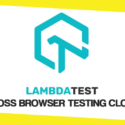How To Work With Testing Without Specifications
Some interesting developments can be traced in recent years among testers and test managers around the world. First of all, testers often complain that they almost never get user requirements suitable for testing. Moreover, “user needs” is the primary response when discussing the evidence base.
Their reaction can be compared to what happens when you inadvertently run into a glass door of a shopping mall. It would seem that there are other ways to develop and assess the evidence base.
In fact, there are additional requirements and ways of developing and assessing the evidence base. Let’s first explore the potential need for this.
In addition, it is important to note right away the necessity of reliable, testable requirements for every testing project. You run the risk of many issues without them, including not knowing if a workable solution has been offered. However, we are also aware of the fact that we see actual circumstances where obtaining verifiable requirements is not possible. Do not overlook the need to consult a third party before proceeding with such complex testing. A professional software testing company view will help you spot any missing details and remove any doubts before you start testing your project.

These are just a few scenarios where different evidentiary claim techniques might be necessary:
We fall short of expectations
The title of this article is not a typo. What can be understood here is that the requirements have been written down so that we, as a testing team, can discuss, evaluate, manage and do everything else with the written information, such as throwing it in the bin and forgetting about it. One can only hope that such experts will not throw it in the rubbish bin and forget it.
Software Sold Commercially Off The Shelf
Consider purchasing commercial software. The requirements should be set, but not with the intention of creating software. Often the concern is about usability. Having a list of what the software can do for you is a minimum requirement. Ideally, the requirements also include desirable or necessary characteristics such as usability and performance. However, neither the software nor your company’s data processing policies fall within these requirements.
Obsolete Requirements
There may have been a time in the past when some of the requirements were relevant and accurate. But over time, they have become less relevant or no longer have any weight at all. Laws, regulations and technology have changed over the years and, as a result, the system or your organization today cannot even come close to meeting the old requirements.
Lack of user or customer input
The development team may demand requirements that can be verified, including testers. But customers and users simply will not give them. They may not be able to agree on what they want. Or they don’t want to wait, coming up with excuses that they are doing business and you have to do your job. You just struggle to state your results without even realizing that you have missed out. Such understatement is really very frustrating.

Generic Sources for Tests
At least thirteen sources of evidence are available:
- Record Control – Is there no data loss as the information is correctly transferred from one place to another in the application?
- Field and data troubles – Do the fields have the appropriate issues and attributes?
- Security – Is the information secure from unauthorized access, both inside and outside the organization?
- Field and data relations – Are relations correctly processed when two or more data elements are connected?
- Concordance and data merging – Are the data correctly merged when two or more data sources are involved?
- File processing – Are the files being accessed and handled properly?
- Performance – Does the application have enough power to handle user demands for cargo handling, response times, and other factors? Stress tests that mimic circumstances where the application would crash due to overload may also be part of this.
- Control of processes and code – various control flows in the code to carry out the intended functions?
- The processes and documents – Are the protocols and documentation accurate in their descriptions of the functionality and behavior of the application?
- Audit logs – Can operations and functions be traced back to a particular user and time?
- Recovery – Is it possible to bring the process back from a failed state?
- User friendliness – Can any member of the general public use the application without special training or expertise? Can the application’s features be performed easily?
- Troubleshooting – Are errors (both anticipated and unanticipated) properly handled?
Summary
The verification, which evaluates whether something has been constructed correctly in accordance with the requirements or the “world of paper,” is based on the project’s performance. The developer’s perspective is primarily represented here. The evaluation of something based on user requirements or hypothetical real-world scenarios serves as the basis for validation. The goal is to assess the user or customer perspective’s suitability for use. Without the two points of view, it runs the risk of having something built or bought that complies with the requirements but is unusable.
Verification is requirements-based testing. If you have distinct, measurable needs, it is a reliable and practical technique. The methods discussed in this article are examples of evidence from the viewpoint of actual use and validation that may be taken into account.
Recommended For You
Dating App Development: Build your own Tinder
Most Inside
Most Inside offers high-quality recommendations and valuable updates to enhance all aspects of your life, providing premium guidance and enriching experiences.




